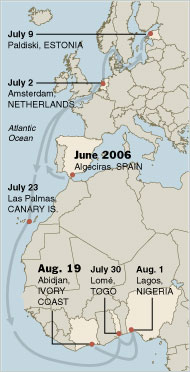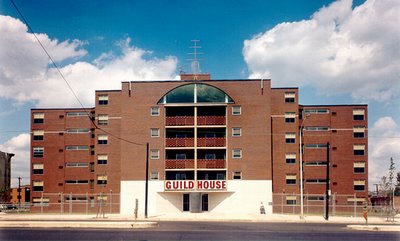"It is not going to make the front of Architectural Digest"
That's for sure. The Times has an article on the recent shift away from those iconic FEMA trailers and towards "cozier, more permanent models of postdisaster housing." While I can appreciate (in concept) a rejection of the FEMA trailer in favor of a denser, safer, and more effective strategy of reconstruction, the renderings seem a good deal less promising than the rhetoric. Exuding the false nostalgia of New Urbanism (DPZ anyone?), these new FEMA alternatives fail to offer a truly progressive and regenerative solution to reconstruction. The smaller detached models (middle image) seem to be nothing more than FEMA trailers with a little "contextual" wedding-cake decoration on the outside - much in the vain of the "Katrina Cottage" that has gained so much currency this past year.
To me, the failure of this approach is twofold. First, by superficially manipulating exterior decoration to mimic so-called "traditional" architecture, these proposals impose a certain order and aesthetic regime that no longer has any social, political, or cultural relevance. I would go further (as I have done previously) by saying that, intentionally or not, the aesthetic agenda of New Urbanism is ideologically aligned to the right-wing agenda of no-bid contracts, redistricting through "reconstruction," and other such undesirable practices encouraged by the powers that be in Washington.
Secondly, the solutions offered thus far perpetuate the flawed status quo of prefrabicated architecture that has remained in place since the very inception of modular construction. Instead of replicating the FEMA trailers, re-cladding them with white trim and gabled roofs, and in some cases stacking them on top of each other, why not use this chance to rebuild the Gulf cities as an opportunity to re-imagine what a prefabricated architecture could actually be? The merits offered by the panelized construction system of the Katrina Cottage have hardly been exploited, in the sense that they propose a new architecture - and, consequently, a real new urbanism - for the Gulf region.
Baby steps, though, I suppose: one at a time. At least this one - moving on from the FEMA trailer - is in the right direction.
link: "U.S. Give Grants to 4 Gulf States to Upgrade Disaster Housing" by Eric Lipton in the New York Times

































